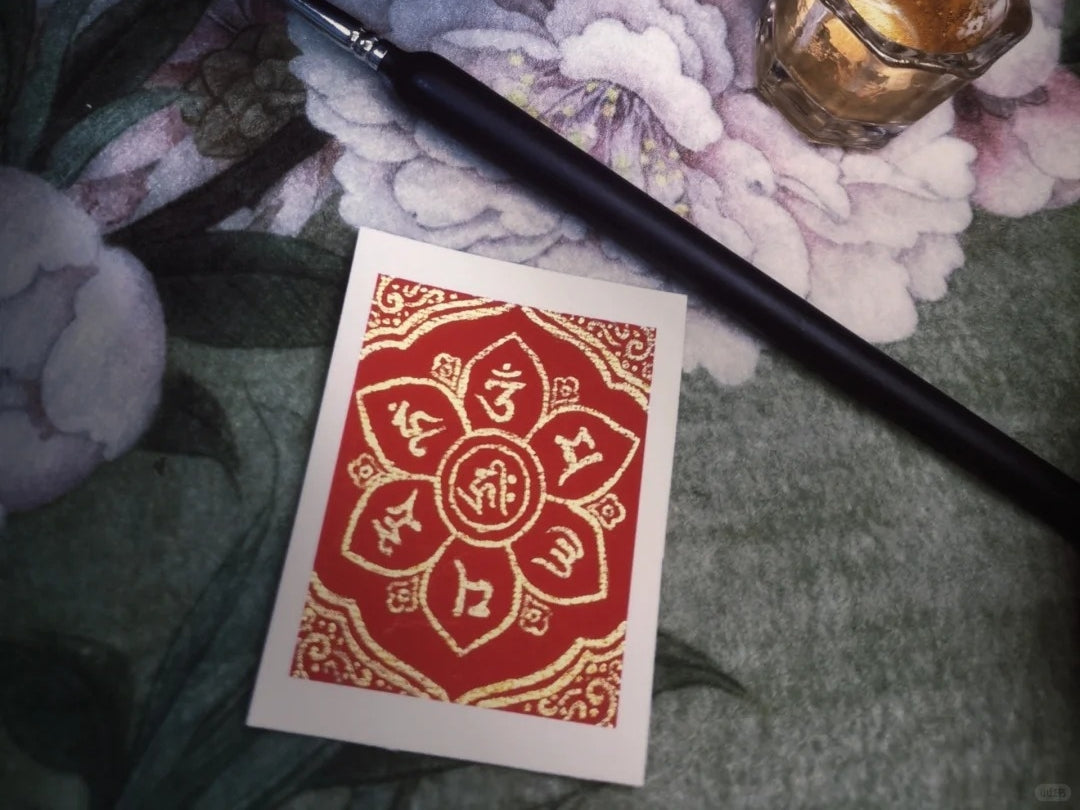The holidays are the season of stories. A carefully chosen piece of Tibetan jewelry can do more than look beautiful — it can carry a blessing, a small ritual, or a daily prompt toward calm. Below is a culturally mindful guide to gifting Tibetan-inspired pieces this Christmas or Black Friday season: story-led suggestions, three price tiers, and gentle etiquette so your gift arrives as intention, not just ornament.

Why give Tibetan jewelry as a gift?
Tibetan symbols — mantras, guardian Buddhas, the vajra, longevity locks, mani amulets — are compact carriers of meaning. For many recipients a pendant or mala becomes a practical friend: something to hold during a stressful moment, a reminder to breathe, or a token of protection. When you present a piece with context and respect, it becomes a lasting, personal gift rather than a novelty.
Story-led gift ideas (and what they mean)
1. Protection Pendant — For someone stepping into change
Why it matters: A small Mahakala or Acala-inspired pendant offers symbolic protection and courage for people starting new jobs, moving cities, or facing a challenge.
How to present it: Include a one-paragraph note explaining the protective imagery and a short, two-breath practice the recipient can use.
2. Compassion Necklace — For a friend who offers steady care
Why it matters: A simple Avalokiteshvara (Four-Armed or Thousand-Armed) charm or an “Om Mani Padme Hum” pendant can remind the wearer to steady the heart.
How to present it: Pair with a tiny card sharing the mantra’s short meaning and suggest saying it silently when stressed.
3. Longevity Lock — For elders or new parents
Why it matters: The longevity lock is a historic talisman for long life and safety. It’s thoughtful for grandparents, parents, or anyone you want to bless with stability.
How to present it: Wrap with a handwritten wish for health and include a note about proper placement (above the waist, kept respectfully).
4. Mani / Six-Mantra Mini Amulet — For a busy practitioner
Why it matters: A mani amulet or six-mantra pendant is discreet, wearable, and easy to pair with short daily practices. It suits someone who wants devotional tools that fit modern life.
How to present it: Suggest a one-minute morning dedication to anchor the habit.
5. Wealth & Right Livelihood Tokens — For entrepreneurs or career changers
Why it matters: Pieces honoring Yellow Jambhala or local patron gods (presented respectfully) can symbolize the wish for ethical prosperity — a reminder that material support and good conduct go together.
How to present it: Frame it as a wish for “right livelihood” rather than mere accumulation.
Price tiers: mindful options for every budget
These are example categories to help match intent and means.
-
Budget (under $50): Simple mantra pendants, small brass charm necklaces, or a handmade cotton-cord mani amulet. These are great for stocking stuffers or a heartfelt add-on.
-
Mid-range ($50–$200): Sterling silver pendants (e.g., small Avalokiteshvara, Acala silhouettes), 27-bead travel malas, or engraved rings with a protective syllable. These balance craft and wearability.
-
Splurge ($200+): Hand-painted miniature Thangka in a brass gawu, a finely worked S925 silver amulet with gemstone inlay, or a custom-commissioned piece from an artisan cooperative. These feel like heirlooms and often support local makers more directly.
For Black Friday shoppers, look for ethically run sales or artisan cooperatives offering small seasonal discounts — the ideal Black Friday spiritual gifts are thoughtful purchases, not impulse buys.
Gifting etiquette: small gestures with big meaning
To gift respectfully and avoid cultural insensitivity, follow these quick guidelines:
-
Explain the meaning. Include a brief card describing the symbol and a one-line suggested dedication or practice. Context matters.
-
Avoid trivializing sacred images. If a piece carries a full deity image or mantra, present it with a small note on respectful wear (above the waist, not in bathrooms).
-
Ask about consecration. If a piece is consecrated (blessed), mention this to the recipient and share any handling guidance.
-
Prefer ethical sourcing. Support artisans, cooperatives, and transparent sellers. That helps keep traditions alive.
-
Make it optional. Some people appreciate a devotional object; others may prefer a secular token. Offer the gift with no expectation — make it an invitation, not a prescription.
Wrapping up: holiday giving as connection
A Tibetan pendant or mala given with thought and explanation becomes more than jewelry: it’s a story, a practice prompt, and a quiet companion for the year ahead. Use the holidays to offer something that invites presence, steadiness, or protection. Done well, these gifts carry warmth that lasts long after the season ends.










